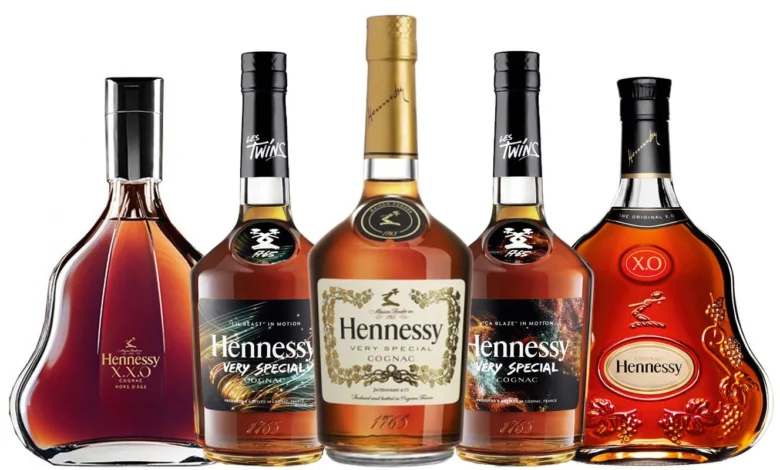Hennessy Cans: The Evolution of Ready-to-Drink Cognac

The idea of putting cognac in a can may sound unconventional to traditionalists, but in recent years, Hennessy cans — or more precisely cognac + mixer in ready-to-drink (RTD) form — have begun to emerge. This shift responds to changing consumption habits, on-the-go lifestyles, and clever marketing strategies targeting younger drinkers.
What Are “Hennessy Cans”? Definition, Format & Variants
When people refer to “Hennessy cans,” they typically mean ready-to-drink (RTD) canned cocktails that use Hennessy cognac (often the Hennessy V.S variety) as the base spirit, mixed with cola or similar mixers. These canned offerings allow consumers to enjoy a cognac-based drink conveniently, without needing to measure, mix, or carry full bottles and mixers separately.
How Canned Cognac Cocktails Differ from Traditional Bottles
-
Pre-mixed: The ratio of cognac to mixer is fixed, eliminating customization but adding convenience.
-
Lower ABV (alcohol by volume): RTD cocktails often have lower alcohol content than straight cognac poured neat, making them lighter and more akin to premixed drinks.
-
Packaging: Aluminum cans or similar sealed beverage containers instead of glass bottles with corks.
-
Shelf stability: Must account for carbonation, oxidation, and flavor stability over time.
-
Serving: Serve chilled, straight from the can or over ice.
Notable Variants & Rumors
One of the better documented examples is the Hennessy Cola canned RTD. A blog post on Cognac Expert details the rumors and facts behind this product, noting that there has been speculation about a ready-to-drink Hennessy and cola can, its taste, ABV, and release prospects.
Hennessy itself also publishes a “Hennessy Cola Cocktail” recipe, where they mix 1.5 oz of Hennessy V.S with 3.5 oz of cola and garnish with lime — effectively replicating what a can would deliver.
So far, wide commercial distribution of pure Hennessy cans remains limited, making them mostly niche or experimental. But with the RTD cocktail market booming, Hennessy cans represent a strategic direction.
Market Trends & Drivers Behind Canned Cognac Cocktails
Why are brands like Hennessy considering or launching canned options? Several converging trends explain this shift:
1. Growth of RTD / Hard Seltzer & Premixed Cocktails
Over the past decade, consumers — especially younger ones — have gravitated toward ready-to-drink alcoholic beverages. The appeal: convenience, portability, consistent taste, and lower effort. Spirits brands are racing to capture this space by offering premium RTD cocktails.
2. On-the-Go Consumption & Urban Lifestyles
Cans are light, unbreakable, and ideal for portability. They suit urban events, outdoor venues, and parties where carrying a full bottle, mixing tools, and mixers is cumbersome.
3. Entry Strategy to New Audiences
Canned cognac cocktails can act as gateway products, introducing cognac to drinkers who might find straight cognac too strong or complicated. By combining cognac with familiar mixers like cola, brands make it more accessible.
4. Margin & Cost Efficiency
Cans are cheaper to produce, transport, and ship than glass bottles. They reduce breakage risk and logistics costs, improving margins for large-scale distribution.
5. Brand Innovation & Prestige Extension
Premium brands like Hennessy releasing canned versions signals innovation and modernity. It helps them stay relevant to evolving consumer tastes while leveraging brand prestige.
Given these drivers, we can expect further experimentation and expansion in Hennessy’s canned offerings.
Technical & Packaging Challenges in Canned Cognac RTDs
Producing high-quality Hennessy cans isn’t just a matter of pouring liquid into aluminum. There are significant technical considerations and challenges:
A. Flavor Stability & Oxidation
Cognac is a delicate blend of aged spirits. When mixed and canned, oxidation, light exposure, and metal interaction can degrade flavor. Careful formulation, inert headspace gases, and stable storage are essential to preserve aroma and taste.
B. Carbonation & Pressure
If the mixer is carbonated (e.g. cola), the can must withstand internal pressure. Engineers must ensure the sealing, can walls, and liners can safely handle stress over shelf life.
C. Lining and Metal Interaction
The interior of cans is lined with a polymer or epoxy resin to prevent alcohol from reacting with metal (often aluminum). The can liner formulation must be compatible with spirit blends. (General can manufacturing uses epoxy or polymer coatings to isolate liquid from metal.)
D. Fill Temperature & Headspace Control
Cans must be filled at correct temperatures and with precise headspace to manage pressure and avoid over-foaming or leakage.
E. Quality Control & Consistency
Maintaining consistent flavor, ABV, and carbonation across large batches requires tight quality control. Small deviations in blending or sealing can result in an off batch.
F. Shelf Life & Storage Conditions
RTD cocktails must remain palatable over many months (or even years). Storage conditions (temperature, light, vibration) factor heavily in shelf stability.
Hennessy or any spirits house venturing into cans must manage these challenges carefully to maintain brand integrity.
Regulatory & Labeling Considerations
Alcohol in canned form is subject to additional regulatory scrutiny, given its novel format in some markets. Here are key considerations:
1. Alcohol Licensing & Distribution Laws
Many jurisdictions regulate canned alcohol differently from bottled spirits. Some may classify canned cocktails as beer, wine, or spirits depending on ABV thresholds. Hennessy must navigate these legal definitions for each market.
2. Labeling Requirements
Labels must clearly present alcohol content (ABV), nutrition or caloric info (where local law demands), ingredient disclosures, bottle/can capacity, health warnings, and producer details. Canned cocktails sometimes face stricter labeling compared to spirits bottles.
3. Import/Export & Tariffs
Cans vs bottles can face different tariffs, duties, or trade classifications. Hennessy’s global operations mean they must account for cross-border rules especially in duty zones.
4. Packaging Waste & Recyclability Compliance
Many markets demand recyclable or sustainable packaging. Hennessy must ensure its cans or materials comply with local environmental legislation.
5. Age & Consumer Verification
Cans may be sold in more casual, retail settings (convenience stores, vending machines), which raises concerns over age verification and legal sales controls.
Pros & Cons of Hennessy Cans: Consumer Perspective
Canned Hennessy-based drinks offer tempting benefits, but also trade-offs. Here’s how they stack up:
Advantages
-
Convenience & Portability: No need for glass, measuring, or mixing. Perfect for parties, travel, events.
-
Consistency: Each can delivers the same cognac-to-mixer ratio, removing guesswork.
-
Lower Entry Barrier: Easier for cocktail novices or casual drinkers to enjoy a cognac cocktail.
-
Affordability: Lower packaging and transportation costs may make canned variants more competitively priced.
-
Brand Reach & Novelty: Drinking a prestigious brand like Hennessy in a casual can form can attract interest and buzz.
Drawbacks / Trade-offs
-
Reduced Customization: You lose the ability to tailor strength, mixer balance, or enhancements.
-
Potential Flavor Degradation: Secondary aging, oxidation, or interactions may weaken aroma and character compared to a freshly poured cognac drink.
-
Lower Prestige Perception: Some cognac purists may view canned versions as “less authentic” or cheapened.
-
Higher Risk of Commoditization: The brand may be seen more as a mass beverage than a luxury spirit.
-
Alcohol Limits: To fit regulatory bands or drinkability, cans may have lower ABV, which may disappoint heavy spirit drinkers.
For many consumers, the trade between convenience vs purity will determine whether they embrace Hennessy cans.
Consumer Reception, Controversies & the Future Outlook
Early Reactions & Skepticism
Because canned cognac cocktails are relatively new, consumer reception is mixed. Some traditionalists balk at the idea of putting cognac in a can, arguing it dilutes the heritage and ritual of sipping. However, younger drinkers and cocktail lovers often welcome the novelty and convenience.
Rumors around Hennessy Cola cans have generated buzz, with consumers debating the possible ABV, flavor profile, and release timing
Brand Moves & Market Experiments
While Hennessy has not publicly confirmed a wide canned line globally, their cocktail recipe content (e.g. Hennessy Cola cocktail) suggests they are primed to support or tie in canned versions
Separately, Hennessy recently announced updated packaging for its Very Special (V.S) line — modernizing labels, gold foil accents, and simplifying elements — which underscores the brand’s willingness to evolve.
Packaging modernization can pave the way for non-traditional formats (like cans) without shocking brand identity.
Regulators, Critics & Responsible Drinking
Some critics argue that canned forms make alcohol more accessible or normalized, especially among younger audiences. This raises scrutiny from public health advocates. Brands like Hennessy must emphasize responsible consumption messaging and compliance with advertising and age restriction laws.
What the Future Holds
-
Limited edition lines: Hennessy may test small batch, region-specific canned cocktails to gauge market interest.
-
Collaborations & artist editions: Similar to bottled limited editions, canned versions could carry artistic packaging for collectors.
-
Expansion globally: Once proven in one market, Hennessy cans may roll out across countries where RTD drinks are booming.
-
Wider mixer variety: Beyond cola, expect options like flavored sodas, citrus, ginger ale, or experimental flavor blends.
-
Hybrid formats: Partial bottles with canned mixers or “mini cocktail packs” combining small bottle plus matching mixers.
If executed well, Hennessy cans could become a mainstream bridge between premium spirits and casual drinking culture.
Conclusion
Hennessy cans — i.e. canned cognac cocktails — represent a bold intersection of tradition and innovation. They respond to evolving consumer tastes by prioritizing convenience, consistency, and portability, while navigating complex challenges of flavor stability, packaging technology, and regulation.
For consumers, the appeal lies in enjoying a familiar cognac flavor effortlessly, while some trade prestige or customization. The brand’s moves, such as modernized packaging and cocktail content, hint that Hennessy is preparing to adopt canned offerings more fully in the future.
In short, Hennessy cans may reshape how people enjoy cognac — turning it from a sipping spirit into a ready, casual cocktail experience.




